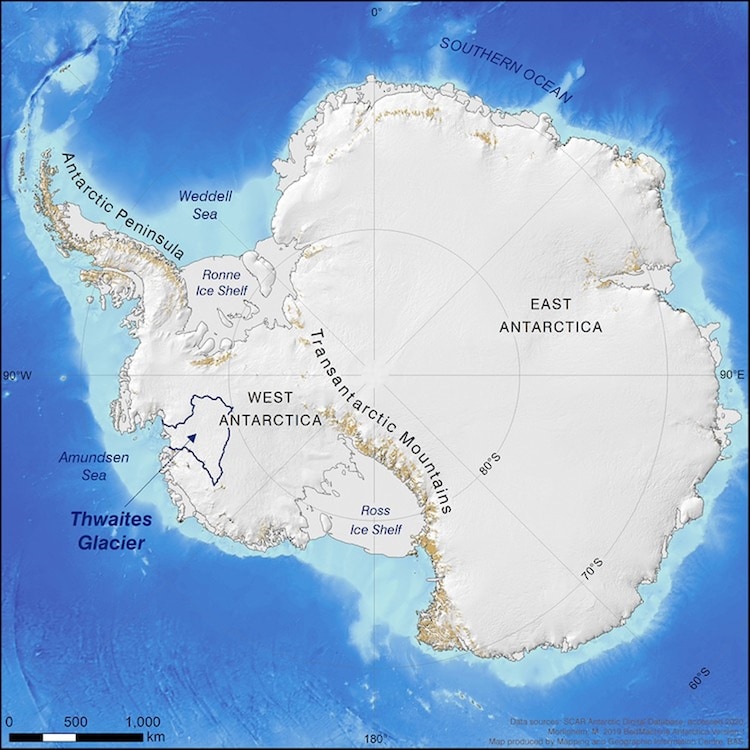
Gigantic deadly tsunamis from Antarctica could be triggered by climate change
With the region warming up and temperatures breaching records, scientists warn that gigantic tsunamis are once again a possibility.

In Short
- Scientists discovered the cause of giant underwater landslides in the region
- The landslides were discovered in the eastern Ross Sea in 2017
- The study published in the journal Nature Communications
Climate change has the potential of triggering gigantic deadly tsunamis in Antarctica that could have a global effect. A new study hints that this has happened in the past when the temperatures in Antarctica were up to 3 degrees Celsius warmer.
With the region warming up and temperatures breaching records, scientists warn that such gigantic tsunamis are once again a possibility. The findings were part of a study in which scientists discovered the cause of giant underwater landslides in the region.
The team from the University of Plymouth discovered layers of fossilised and biologically-rich sediments beneath the sea floor. These layers lie a hundred meters below the surface of the sea beneath extensive areas of underwater landslides.
The study published in the journal Nature Communications states that Antarctica’s continental margins pose an unknown submarine landslide-generated tsunami risk to Southern Hemisphere populations and infrastructure.
"Giant submarine landslides have occurred both on the southern and northern high latitude continental margins, including the Antarctic and Norwegian continental margins. More knowledge on these events in Antarctica will also be relevant for submarine geohazard evaluation offshore Norway," Jan Sverre Laberg, from The Arctic University of Norway, Tromso, said.
Video | Roaring! Watch the moment when GSLV lifted-off with NVS-1 Navic satellite
The landslides were discovered in the eastern Ross Sea in 2017 by an international team of scientists during the Italian ODYSSEA expedition.
The newly discovered weak layers – made up of historic biological material – made the area susceptible to failure in the face of earthquakes and other seismic activity. The gigantic tsunamis were triggered when temperatures in Antarctica were up to 3 degrees Celcius warmer than they are today when sea levels were higher and ice sheets much smaller than at present.
"With the planet currently going through a period of extensive climate change – once again including warmer waters, rising sea levels, and shrinking ice sheets – and there is the potential for such incidents to be replicated," the University of Plymouth, said in a release.
Also Read | Navy's elite marine commandos to be part of Gaganyaan's post-landing recovery, training plan released
The team analysed and estimated that future seismic events in the region off the coast of Antarctica might again pose a risk of tsunami waves reaching the shores of South America, New Zealand, and South East Asia.
"Large landslides along the Antarctic margin have the potential to trigger tsunamis, which may result in substantial loss of life far from their origin," Dr Amelia Shevenell, Associate Professor of Geological Oceanography at the University of South Florida said.
Also Read | Enough with fossil fuels, Pope says in latest climate appeal

